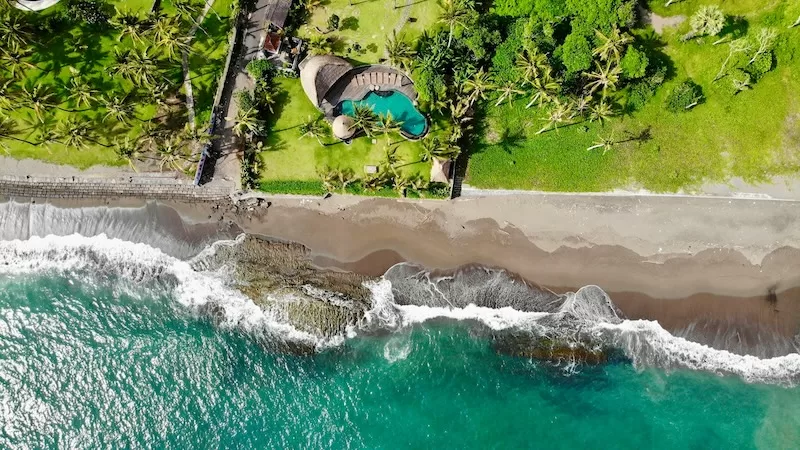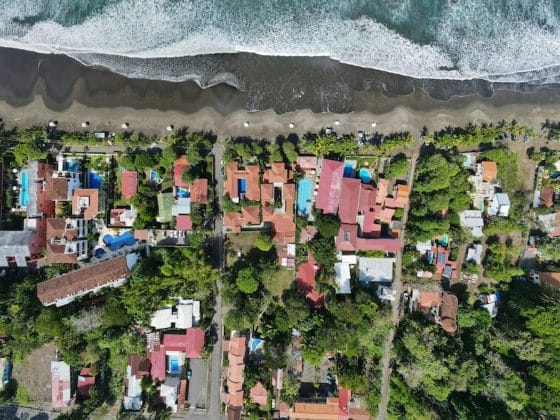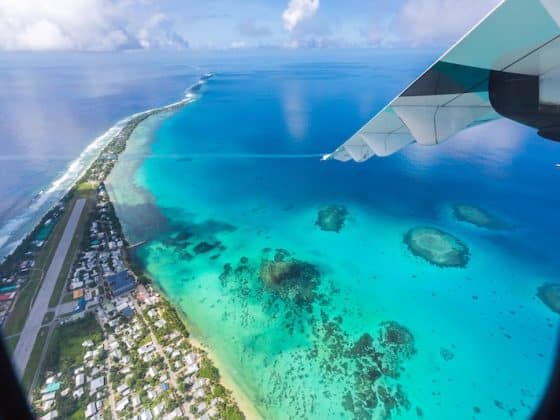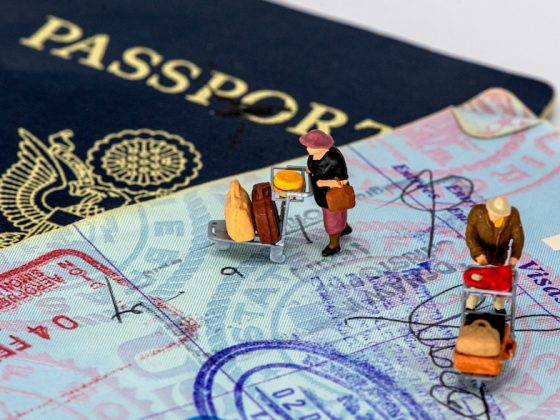Introduction
Imagine starting each day in a place where rice-terraced hills meet the sea, and the air carries the scent of frangipani and salt. For many wanderers and intentional settlers, the question becomes: how can I like this every day? How to live in Bali permanently? Moving from holiday mode into a sustained life on the island means more than booking a long-stay villa. It means understanding which visa lets you stay, how the cost of daily life works, how you fit into a local community, and how you navigate systems built for visitors more than full-time residents.
In this guide you’ll find concrete steps, real numbers and front-line insights to turn the idea of living in Bali into a realistic plan.
Why Bali Attracts Long-Term Residents
Lifestyle and climate
The tropical rhythm of Bali appeals for obvious reasons: warm weather year-round, rice fields, beach access, and a calmer life than many urban centers. But it’s more than climate. It is the way daily patterns shift. On Bali you trade rush-hour grids for winding village roads lined with motorbikes and coconut palms. Weekends might mean temple offerings at dawn, a scenic scooter ride through green terraces, or an early dinner as the air cools and insects start their chorus. You move out of city mode into something more textured, even while maintaining modern comforts.

Expat community and infrastructure
There is a sizable expat and long-stay community on the island. Bali now receives more than five million foreign visitors a year, and that steady demand has helped shape visible infrastructure such as international schools, coworking hubs in towns like Ubud and Canggu, English-speaking clinics and gyms. All of this makes the logistics of living abroad become simpler: reliable internet (critical if you work remotely), ride-hailing apps, supermarkets with familiar brands, and enclaves where it is easy to fall into a community of people in a similar chapter of life. The presence of other longstanding residents adds social depth. You’re not just passing through; you’re joining a slower-turning current.
Financial value and flexibility
A core reason many consider living long term in Bali is that your money stretches further. For a western salary or savings, the island offers more living space, more comfort, and more leisure than many urbanhome bases. You can cover simple housing and everyday expenses from around $950 USD a month. Flexible living is part of the story too. You can opt for a modest villa surrounded by greenery for the price of a small apartment elsewhere or scale up. You often don’t need to cram into a small city dwelling to find location and calm. There is room to breathe.
Cultural richness and creative life
Bali is a place alive with ritual, art, craft, and local character. The island’s Hindu majority (around 83% as of 2022) live in communities that observe ceremony, temple festivals and village life in full view. For residents that means you’re immersed in something lived-in: the scent of incense at dusk, the sound of gamelan music, artisans carving wood in more serene villages. Moreover, Bali attracts creative entrepreneurs and wellness professionals drawn to that blend of tradition and international ease. According to research on expats in Bali, many leverage their “cultural and social capital” in ways that integrate a lifestyle business or small enterprise into their daily environment.

Strategic location and travel connectivity
Bali sits in a region where flights link you easily to Asia, Australia and, with rising connectivity, the wider world. For long-term residents, that means you’re not cut off. You have home-base flexibility and access. On-island travel to neighboring islands, diving trips, or quick hops to domestic cities add up to a lifestyle of both rooted-in and ready-to-explore.
Wellness, nature and balance
You’ll find that living in Bali long term is often a quest for balance: mornings might start with a yoga class overlooking a jungle valley, evenings end with fresh local fish grilled by the sea. There’s widespread access to health-food cafés, seasonal markets, spa services and alternative medicine clinics. For many, the island beckons because the environment supports a lifestyle focus that urban life often erodes. A digital-nomad article recently pointed out that Bali’s reliable Wi-Fi, villa-with-pool price point and variety of health and wellness services made it a standout location among six countries tested.
Read More Like This: Top 10 Things to Know if You’re Moving to Bali
Understanding Visa and Residency Options
Short-Term Tourist and Business Visas
Before establishing yourself permanently, it’s wise to dip in with a short-stay visa so you can feel the pulse of Bali without committing fully. For instance, a Single-Entry Visit Visa (or e-Visa) lets you stay up to 60 or up to 180 days depending on purpose and extension, ideal for those still evaluating a life rooted in Bali.
While on a tourist-type visa you can live and explore, you generally cannot work locally or claim the sort of rights permanent residents get. It’s the ‘test drive’ phase; you can taste the second cup of coffee by the rice terraces and see if you want to swap that test drive for the full residency lane.
Limited Stay Permit (KITAS / ITAS)
When you decide you’re ready for more than a few months, the next step is the Limited Stay Permit, commonly referred to as a KITAS (Kartu Izin Tinggal Terbatas). This permit is available in various categories: employment-sponsored, investor, marriage to an Indonesian citizen, retirement, or even remote worker in some cases.
What the KITAS gives you:
- Legal permission to live in Bali for an extended period (often 1 year, renewable).
- Depending on category, the right to work (for a work-sponsored KITAS), or to live without working if you hold a retirement or family category permit.
- The need to maintain a sponsor (company, spouse, or investment vehicle) and keep your documentation up to date.
- The schedule of exit-reentry rights, valid address registration, and compliance with Indonesian immigration law.
Think of this as shifting from “visitor mode” to “resident-in-waiting” mode: you have a clearer anchor, more rights, but it’s still transitional.
Permanent Stay Permit (KITAP)
If what you want is stability, roots, long-term residency in Bali, then the KITAP (Kartu Izin Tinggal Tetap) is the ultimate goal. According to visa experts: this permit is typically available after holding a KITAS for a certain number of years, under certain categories.
Key features and rules of the KITAP:
- Valid for five years at a time, and renewable indefinitely if conditions are met.
- Grants long-term exit-reentry rights (commonly a two-year multiple exit-reentry permit, refreshed periodically) so you can leave the country and return without losing residency.
- Eligibility depends on category: for example, being married to an Indonesian citizen, being an investor or company executive with a sustained period of sponsorship or holding a retirement KITAS for required years.
- Once you have a KITAP you essentially shift from “temporary resident” into “resident full-time” status (although not full citizenship). You get many of the same everyday rights others have: local bank account, driver’s license, greater freedom of movement.
Summary of the Pathways
| Permit Type | Typical Duration | Typical Purpose | Key Limitations |
| Tourist/Business Visa | 30–180 days initial | Explore, short stays | Cannot work, limited renewal rights |
| KITAS | 1-2 years (renewable) | Work, invest, family, retirement status | Requires sponsor, still provisional |
| KITAP | 5 years + renewable | Full permanent residency | Stricter eligibility, higher documentation |
Why It Matters for Your “How to Live in Bali Permanently” Strategy
If your goal is living in Bali permanently, you want to design your path with the KITAS → KITAP progression in mind. Skipping the transition might expose you to risk (visa overstays, legal issues). You also want to pick the right category up front: if you plan to work or invest you’ll take a different route than if you plan to retire quietly.
Accordingly your “how to live in Bali permanently” plan must include: chosen permit type, timeline to upgrade, cost schedule, and compliance checkpoints.
Step-by-Step Process to Secure Long-Term Residency
Choose the right visa pathway
Think of this as choosing the route that will shape your next decade. The path depends on your purpose. Will you work for a local company and build a career on the island. Will you invest in a business and take advantage of Bali’s expanding hospitality and wellness landscape? Will you retire among palm-lined roads and early-morning temple bells? Or will you earn your income abroad as a remote worker while calling Bali home?

Quick Bali Visa Route Selector
Start here if you are unsure which visa category fits your situation. Choose the statement that matches your situation and follow the recommended route toward extended residency.
Do you plan to work for a company registered in Indonesia?
→ Yes
You likely need a Working KITAS
Suitable if: Employed by an Indonesian business
Next step: Maintain for required years → become eligible for KITAP
Do you plan to build or invest in a business in Bali?
→ Yes
You likely need an Investor KITAS
Suitable if: Business ownership or major capital investment
Next step: Upgrade to KITAP after long-term holding
Are you married to an Indonesian citizen?
→ Yes
You likely qualify for a Spouse-Sponsored KITAS
Suitable if: Legally married with Indonesian spouse sponsorship
Fastest route to KITAP residency
Are you retiring with stable passive income?
→ Yes
Consider a Retirement KITAS
Suitable if: Age 55+, foreign pension/steady income
Next step: Transition to KITAP after multi-year residency
Will you live in Bali but earn income only from abroad?
→ Yes
Your route may involve a long-stay permit such as the Second Home Visa
Suitable if: Digital workers, foreign-income professionals
Next step: Maintain financial requirements for renewal
Are you still exploring Bali and not ready to commit?
→ Yes
Start with a Single Entry Tourist or Business Visa
Suitable for: Research phase, house-hunting, trial living
Next step: Switch to a limited-stay pathway before planning permanence
Remember: you can reach permanent stay status (KITAP) only after holding an eligible KITAS or long-stay permit for the required period. The right visa is simply the one that aligns with:
• Your income source
• Your purpose for being in Bali
• Your extended life plan
Gather required documentation
Once the route is clear, the paperwork becomes your toolkit. Expect to show a passport with at least six months validity, health certifications, criminal background clearance, and proof of financial stability. Some applicants will also need a sponsorship letter, tax documentation, or investment evidence tied to the visa type.
The Second Home Visa, often discussed by those seeking an extended residency, has more robust financial requirements. For example, a bank deposit or proof of high-value property may be essential for approval. Although the numbers might feel large at first glance, they are part of Indonesia’s effort to ensure residents pursuing permanence contribute meaningfully to the local economy.
A methodical approach works best. Create a checklist, confirm rules from official immigration channels, and keep copies of every document stored both digitally and physically. Bureaucracy can feel like a maze, but preparation smooths your route.
Local registration, tax status and compliance
Approval is only the beginning. Once the permit is granted, you must register your presence and remain aligned with Indonesian regulations. Depending on where you reside, this may involve reporting to your nearest immigration office, submitting biometrics, and confirming your residential address. You will also receive important paperwork tied to exit-reentry rights so that travel abroad does not invalidate your stay.
There is another crucial detail: the tax clock. Residents spending more than 183 days in Indonesia in a twelve-month period may trigger tax residency status. By maintaining awareness of this threshold and getting professional guidance early, you avoid surprises later. Keeping your immigration and tax compliance clean protects your ability to remain in Bali without disruption.
Cost of Living and Budgeting for Permanent Life
Accommodation, utilities and daily expenses
Everyday routine in Bali can be surprisingly flexible, shaped by the neighborhood you choose and the comforts you prioritize. Rent is the anchor of most budgets. A compact apartment near Denpasar markets keeps things modest. A villa behind the cafés of Canggu or the jungle-view terraces of Ubud invites bigger spending and a completely different vibe at home.

Utilities then fine-tune your monthly number. Air-conditioning feels like a blessing on warm nights, yet it raises electricity bills quickly. Strong Wi-Fi is essential for remote workers and often costs more in areas that depend on higher-tier providers. A scooter becomes part of everyday movement: parking near coworking spaces, running groceries down winding side streets, watching the odometer creep upward faster than expected. Fuel stays affordable, but frequent rides mean steady refills.
Food offers similar choice. Warung meals with fresh rice, grilled fish and sambal keep daily cost comfortable. Imported cheeses and late-night pizzas at expat restaurants create a different bill. What you spend depends less on survival, more on lifestyle preference.
Health, schooling and transport
Healthcare comes in layers. Local clinics are inexpensive and efficient for routine needs. International hospitals with modern facilities and English-speaking staff offer peace of mind at a higher cost. Many long-term residents see private insurance as the trade-off that keeps unexpected events from derailing plans.
Schooling carries a major cost for families who want international-level education. Programs often include language immersion, creative arts and community ties that make growing up in Bali memorable. The price reflects that quality.
Transport stays convenient and uncomplicated. Ride-hail apps help for longer distances or rainy days. Owning a scooter adds independence and spontaneity. Add in occasional flights for visa appointments or quick visits home and the yearly budget becomes clearer.
Some expenses only appear once a year or when you least expect them. Visa renewals, legal fees, and administrative processing make up a recurring part of extended residency. Tropical weather creates maintenance moments: mold prevention during rainy months, repainting a villa wall sun-faded in the dry season. Imported household goods and certain specialty foods land with price tags that reflect their journey across the ocean. There is also the social factor: weekend trips to nearby islands, beach clubs with friends visiting from abroad, a sunset dinner last minute because the sky looks too perfect to ignore. As it turns out, joy can have a price tag.
Your Bali budget buffer
To keep life smooth and avoid financial stress, consider a 10–20% monthly buffer on top of expected living costs. This covers spikes in electricity during hotter seasons, healthcare surprises, special family activities, or a sudden invitation for a weekend in the Gili Islands. The buffer means you can enjoy those moments instead of worrying how they fit into a spreadsheet.
Sample Monthly Budgets
| Expense Category | Solo Digital Nomad | Couple (Moderate Lifestyle) | Family of Four (International School) |
| Rent | $450 – $900 | $900 – $1,500 | $1,800 – $2,800 |
| Utilities & Internet | $50 – $100 | $100 – $150 | $150 – $250 |
| Food & Groceries | $200 – $350 | $400 – $700 | $700 – $1,000 |
| Transport (Scooter/Ride-hail) | $30 – $80 | $60 – $120 | $100 – $200 |
| Health Insurance | $50 – $100 | $100 – $150 | $200 – $400 |
| Entertainment & Weekend Activities | $150 – $250 | $300 – $500 | $500 – $700 |
| Visa & Legal Costs (avg. monthly equivalent) | $50 – $120 | $80 – $150 | $150 – $300 |
| Schooling (if applicable) | — | — | $1,800 – $2,400 |
| Monthly Subtotal | $980 – $1,900 | $1,940 – $3,270 | $5,400 – $8,050 |
| Buffer (10–20%) | + $100 – $380 | + $200 – $650 | + $540 – $1,610 |
| Estimated Total | $1,080 – $2,280 USD | $2,140 – $3,920 USD | $5,940 – $9,660 USD |
How to read these examples
These samples reflect three different ways people build a life in Bali:
• A solo digital nomad typically focuses on workspace availability, scooter access and flexible living in active neighborhoods.
• A couple often blends comfort with convenience, selecting nicer locations or home features so life feels more permanent than a holiday.
• A family of four may prioritize international schooling, health plans and larger living spaces that support stability and routine.
The monthly totals vary because the needs of each household shape the budget. None of the categories is “better” or more luxurious by default. Each represents a different (and equally valid) way to plant roots on the island.
Practical Lifestyle and Adaptation Details
Finding a home and dealing with lease or ownership restrictions
Housing in Bali feels personal because your home becomes part of the landscape. You might step outside to banana leaves brushing the wall or hear roosters greeting the day before the sun fully rises. But choosing the right home involves more than liking the view.
Foreigners cannot directly own freehold land in Indonesia. Long-term residents usually sign multi-year lease agreements with landowners or set up legal structures that allow usage rights without transferring full ownership. That means contracts must be understood clearly, including zoning rules, permitted activities on the property, and your ability to renew a lease when it ends.
Working with reputable local agents and legal advisors helps avoid common traps. Some leases include maintenance responsibility for gardens or pools. Others require advance payment for six or twelve months, not just one month at a time. It is common for landlords to request a deposit and full payment before move-in, so preparing those funds ahead can smooth the transition.
Home searches often feel like a treasure hunt. Narrow roads lead to villas hidden behind high gates. Coastal houses sit near vibrant nightlife, while Ubud rentals trade ocean breeze for jungle stillness and cooler nights. Tentative residents often tour multiple neighborhoods before deciding where daily life will feel right.
The island follows a Balinese Hindu calendar with intricate cycles. Ceremonies take place frequently, and you may find a woven offering placed on your doorstep with fresh flowers and a hint of incense. Shoes come off at the door in most homes. Motorbike horns signal presence, not impatience. Trash disposal follows community rules, sometimes coordinated by the banjar (local neighborhood council), so asking for guidance prevents misunderstandings. Respecting these rituals and picking up the small habits around them helps you move from observer to neighbor.

Bahasa Indonesia is widely spoken across the island. Short greetings, polite forms, and numbers are enough to open doors socially. A simple nod during a procession, a soft terima kasih at a market stall, patience during ceremony traffic. In many neighborhoods, locals appreciate even a small effort to understand their language. It signals interest in the place, not just enjoyment of the scenery.
Neighbors might knock with homemade snacks during holidays. Children playing outside may smile shyly until you respond with a cheerful apa kabar. Joining exercise groups on the beach, weekly markets, or volunteering activities introduces friendships faster than waiting to meet people through social media.
Beyond the expat hubs of Canggu or Ubud, Bali invites newcomers into its more traditional fold. Rice farming schedules influence traffic patterns. Processions pause streets for temple offerings. Rainy season changes how people move around the island. You absorb these signals and adjust your style, learning that life here values patience as much as progress.

Risks, Common Pitfalls and Things to Watch
Visa overstays and legal issues
Living in Bali, like in anywhere else, means navigating the legal system of your host country with care. For example, if you stay beyond your permit without renewing or switching to a proper long-stay visa, the consequences are hefty. Even a one-day overstay can lead to penalties. If you slip past your visa expiry, expect a fine of about $65 USD for each additional day, that applies even through the first 60 days of overstay. If the overstay extends beyond 60 days, things escalate: you can face detention, deportation and bans on re-entry. Indonesia has begun applying zero-tolerance rules for major violations.
For someone planning a life in Bali, the takeaway is: track your visa expiry like you track your rent payment date. Build reminders, engage a reliable visa agent, and don’t assume because you’re “settled” you’re immune from immigration checks.
Real-life caution: A resident who treats visa renewals as an afterthought risks having everything else (job, home, bank account) unravel overnight if immigration flags their status.
Infrastructure, environmental and regulatory concerns
Life in Bali feels relaxed but the island is still dealing with growing pains and regulatory flux. Infrastructure (roads, waste systems, water and power) strains under combined pressure of population growth, tourism and local development. One recent study flagged a substantial gap between policy intent and on-the-ground delivery in tourism-related infrastructure.
Traffic jams, water shortages, unpredictable power cuts and waste-disposal issues are real. For example, narrow winding roads around Uluwatu or Canggu can become bottlenecks during high season, delaying daily commutes and turning what should be a 20-minute drive into 45.
Regulatory changes are another dimension. In 2025 the provincial government introduced a new coastal-and-heritage protection law aimed at limiting large-scale development near sacred sites and beaches. These shifts signal that what you sign up for today may not match the same rules tomorrow. Zoning, building permits, land use rights, they all evolve.

For anyone planning to stay, it helps to see your home, your investment and your lifestyle through a future-proofing lens. What works this year might face changes next year. Will your lease survive a moratorium on new builds nearby? Will your villa remain accessible if drainage or water tables deteriorate?
Other key hazards to watch
- Property-related risk: Because foreigners cannot own freehold land, many rely on leasehold or nominee structures. These carry legal risk if the landowner changes mind, or if local enforcement changes.
- Cost inflation & lifestyle creep: Rapid tourism growth has pushed up housing and goods costs in some hotspots, meaning your budget might shift faster than you expect.
- Environmental and climate risk: Bali is not immune to tropical storms, flooding, and changes in groundwater. One region noted salt-water intrusion due to over-use of wells.
- Tax or legal surprises: If you cross the 183-day threshold you may trigger tax residency. Legal frameworks may update. Planning requires professional advice.
Actionable checklist: Protect your residency
- Set multiple reminders for visa expiry (60 days, 30 days, 10 days ahead).
- Maintain a folder (digital + print) of all your visa, permit and exit-reentry documents.
- Budget for at least 10-20% contingency in your housing and operating costs in case landlord or regulatory changes push costs higher.
- Choose housing wisely: a villa near the surf may be alluring but assess road access, power reliability, water supply, drainage.
- Stay current with local development plans. Subscribe to an expat legal newsletter or community forum so you’re alerted when zoning or land-use rules change.
- Keep flexible: have exit/re-entry rights or portability in case you need to leave quickly due to legal or regulatory shifts.
FAQs
Q1. Can a foreigner own land in Bali permanently?
No. Foreigners cannot own freehold land in Indonesia under standard regulation. Leasehold arrangements or long-term contracts are typical.
Q2. How many years until I can apply for permanent residency (KITAP)?
Typically after 5 years holding a limited stay permit (KITAS) you become eligible for a KITAP.
Q3. Is it possible to live in Bali but not pay Indonesian taxes?
Indonesia counts tax residency by total time in the country, not by uninterrupted stay. If a foreign resident spends more than 183 days within any 12-month period in Indonesia, they may be treated as a tax resident for that year. Consulting a tax advisor is wise.
Q4. What is the cost of living for a single person living permanently in Bali?
A modest estimate from recent long-stay data is roughly US $950 USD per month for basic accommodation and living costs.
Q5. Can I work remotely for a foreign company while living in Bali?
There are visa pathways (e.g., remote-worker visas) being introduced in Indonesia.
Q6. How often must visa renewals happen?
It depends on the permit: tourist visas may require extension every 60 days; KITAS is usually valid 1-2 years; KITAP is valid 5 years and renews indefinitely.
Q7. Are there family visas for spouse/children?
Yes. Several visa categories allow your spouse or children to live with you in Bali under a dependent permit. The requirements change based on the primary visa type, so documents like marriage or birth certificates, proof of sponsorship, and address registration are typically needed. Many long-term residents secure a KITAS first, then apply for family dependents so everyone’s permits align under one sponsorship.
Q8. Do I need health insurance to live long-term in Bali?
It is not always mandatory for every visa category, but long-term residents typically carry international or private insurance to access higher-standard medical care. It protects against unexpected costs and ensures easier treatment at modern hospitals.
Q9. Can I buy a home or invest in property in Bali as a foreigner?
You can invest in real estate through leasehold contracts or certain eligible rights such as Hak Pakai. Working with a qualified legal advisor is important so your contract meets Indonesian ownership regulations and remains secure over time.
Q10. Which areas are most popular for long-term expats?
Canggu, Uluwatu and Seminyak attract digital workers and beach-focused lifestyles. Ubud appeals to those wanting nature and wellness culture. Sanur, Jimbaran and parts of North Bali draw families or relaxed residents seeking calmer routines.

Setting Anchor in Bali
You now hold the pieces that shape a life in Bali: the legal pathway, the budget reality, and the everyday vibe that wins over those who choose to stay. Living permanently in Bali means shifting into mornings shaped by ceremony, errands under tropical sun and friendships built over shared plates of nasi goreng. The practical choices you make (the right visa, the right home, the right pace) become the structure that supports your island future.
If your goal is to work from a place that feels like a reward, invest in a growing community or trade familiar streets for shoreline and rice fields, the next step is within reach. Line up the paperwork. Set your expectations wisely. Then lean into the life waiting here.
Ready to turn intention into action? Subscribe to our newsletter for up-to-date visa changes and cost benchmarks. Stay informed, stay legal, and start shaping your permanent life on the island.
Contact Author
"*" indicates required fields
Stay Ahead on Every Adventure!
Stay updated with the World News on Escape Artist. Get all the travel news, international destinations, expat living, moving abroad, Lifestyle Tips, and digital nomad opportunities. Your next journey starts here—don’t miss a moment! Subscribe Now!










